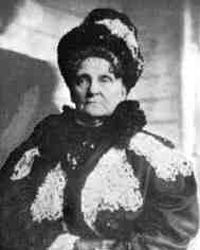Hetty Green was a successful American businesswoman who was as renowned for her Wall Street savvy and fantastic wealth as she was for her ruthless frugality and scroogelike behavior.
Hetty Green’s Early Days
Born Henrietta Howland Robinson on November 21, 1835, in New Bedford, Massachusetts, “Hetty Green” became financially astute at a very early age. After her mother died, New York Social Diary reports that when Hetty was two years old she went to live with her grandfather. Green was said to have read the financial section of the newspaper to her father, Edward Mott, and by age 13 she became the family’s bookkeeper. At age 15 she headed to Boston to attend school and when she turned 31 she became the world’s wealthiest woman after the deaths of her father and aunt. Her family’s prosperous whaling fleet, combined with her their controversial Civil War bond investments, left Hetty with $7.5 million in liquid assets, making her one of the wealthiest people of her time.
Still, Hetty refused to relinquish her Quakers roots and maintained an exceedingly simple and frugal lifestyle, while rapidly accumulating enemies.
According to the New York Social Diary article, “The Woman Who Loved Money,” Hetty Green found herself in a five-year court battle pertaining to her family’s assets when she learned that her aunt Sylvia had willed $2 million to charity. Hetty conjured up a document that she used in court to fight against her aunt’s executor in the infamous Robinson v. Mandell case, and established a pattern of spending thousands of dollars on lawyers to take revenge on old foes.
At age 33, Hetty married Edward Henry Green, a member of an affluent Vermont family. She demanded that he forsake all rights to her money so that only her relatives had access to the funds, New York Social Diary states.
Sources in this Story
- New York Social Diary: The Woman Who Loved Money
- ConfederateBonds.com web site
- LewRockwell.com: A Miser’s Miser
- USA Today Money: Hetty’s final words? Perhaps bah, humbug!
- New York Times: Obituary of Hetty Green
Green’s Notable Accomplishments
The couple moved to Manhattan to reside in Edward’s apartment, but shortly thereafter, Hetty Green’s cousins sued her for forgery, the two moved to London where they settled in the Langham Hotel. Their two children, Ned and Sylvia, were born there.
According to LewRockwell.com, the family uprooted itself again and moved to Edward’s hometown of Bellows Falls, Vermont. Hetty grew nasty with her family, domestic servants, and everyone else who crossed her path; in 1902, Edward expressed his disdain by divorcing her. She took her children to live in a rundown Hoboken, New Jersey, apartment, and the three of them commuted to her Manhattan-based bank every day.
Hetty spent her days sitting on the floor of her office in the Chemical National Bank (on which she refused to pay rent) making real estate and railroad investments, and her business morphed into a lending institution. However, it was said that she “wouldn’t lend unless she felt she effectively owned the person in question,” LewRockwell.com asserts.
In a LewRockwell.com article, Jeffrey A. Tucker dubbed Greene the “hyper miser,” or the “miser’s miser,” and over time she grew even more stingy with her money. It’s been said that she rode in the car section of the ferryboat she took to work so she could bypass the passenger fee and had only two changes of frumpy clothes. She was callous even in her interactions with her children. According to Tucker, Greene refused to pay a doctor to treat her son’s leg wound, and it later had to be amputated. She was quick to dismiss her daughter Sylvia’s potential suitors, but eventually “allowed” Matthew Wilks to marry her, with one provision—he had to agree to waive all rights to her money.
The Rest of the Story
She is said to have made her fortune during the gilded age of male investors, on par with the Rockefellers and the Carnegies. However, according to biographer Chris Slack, “Unlike Carnegie, Morgan and Vanderbilt, who transformed their spotty reputations through philanthropy, Hetty Green left no monuments to herself.”
Her philosophy was simple, “Buy cheap and sell dear.” According to USA Today, “She had enough of courage to live as she chose and to be as thrifty as she pleased, and she observed such of the world’s conventions as seemed to her right and useful, coldly and calmly ignoring all others.”
Hetty Greene died as one of the world’s richest women, with a net worth of over $1 billion dollars in today’s market. According to her New York Times obituary, Hetty Greene passed away at the age of 82 in her son’s home, after suffering from numerous paralytic strokes. According to her son, 10 years prior to her death, after experiencing a minor assault from indigestion, she became frightened and was baptized in the Episcopal faith.
The insatiable Hetty Green carved a unique niche in the world of finance, and is remembered as the woman with “too much money and too little heart.”
This article was originally written by Jen O’Neill; it was updated November 19, 2017.











